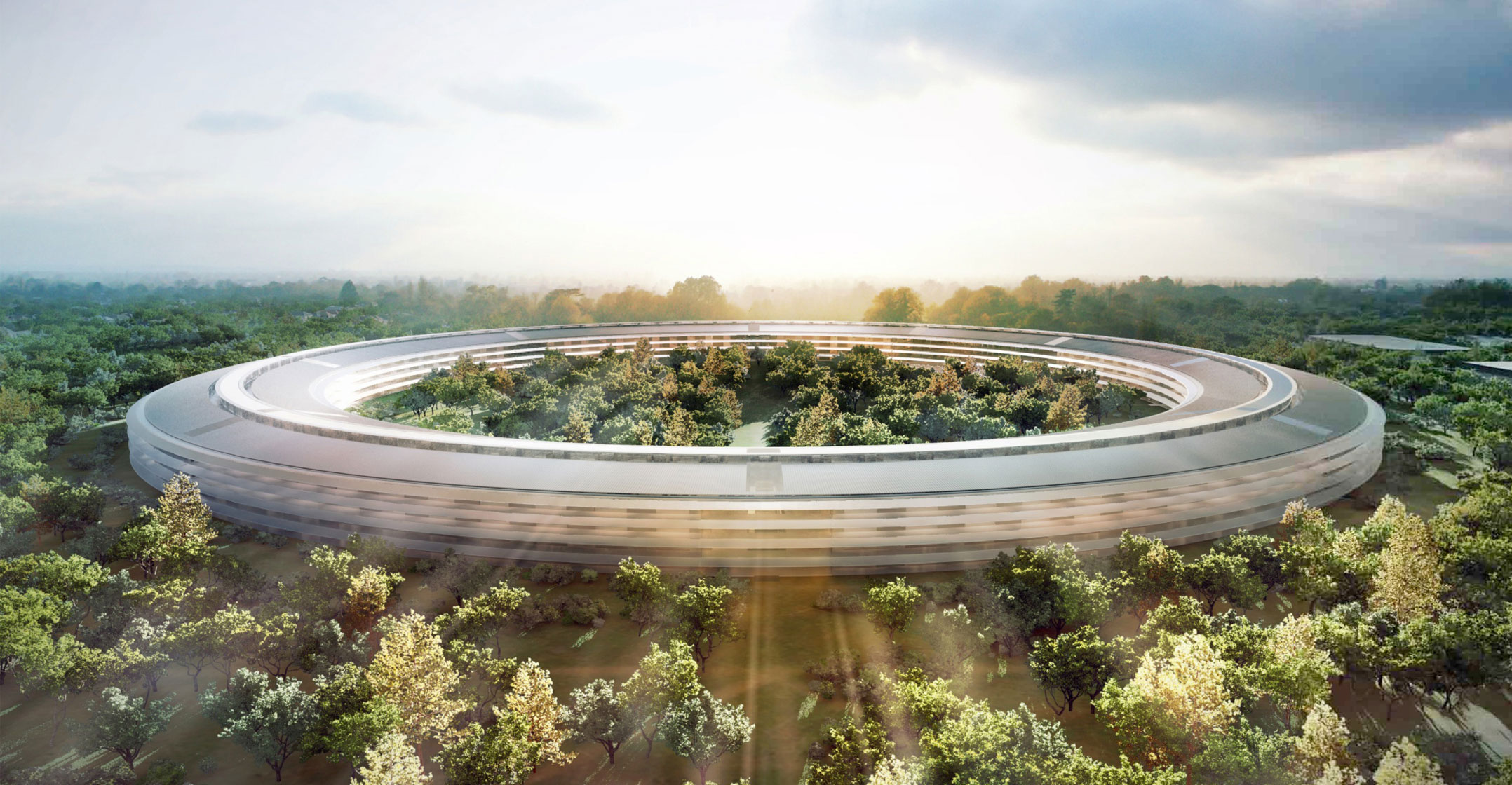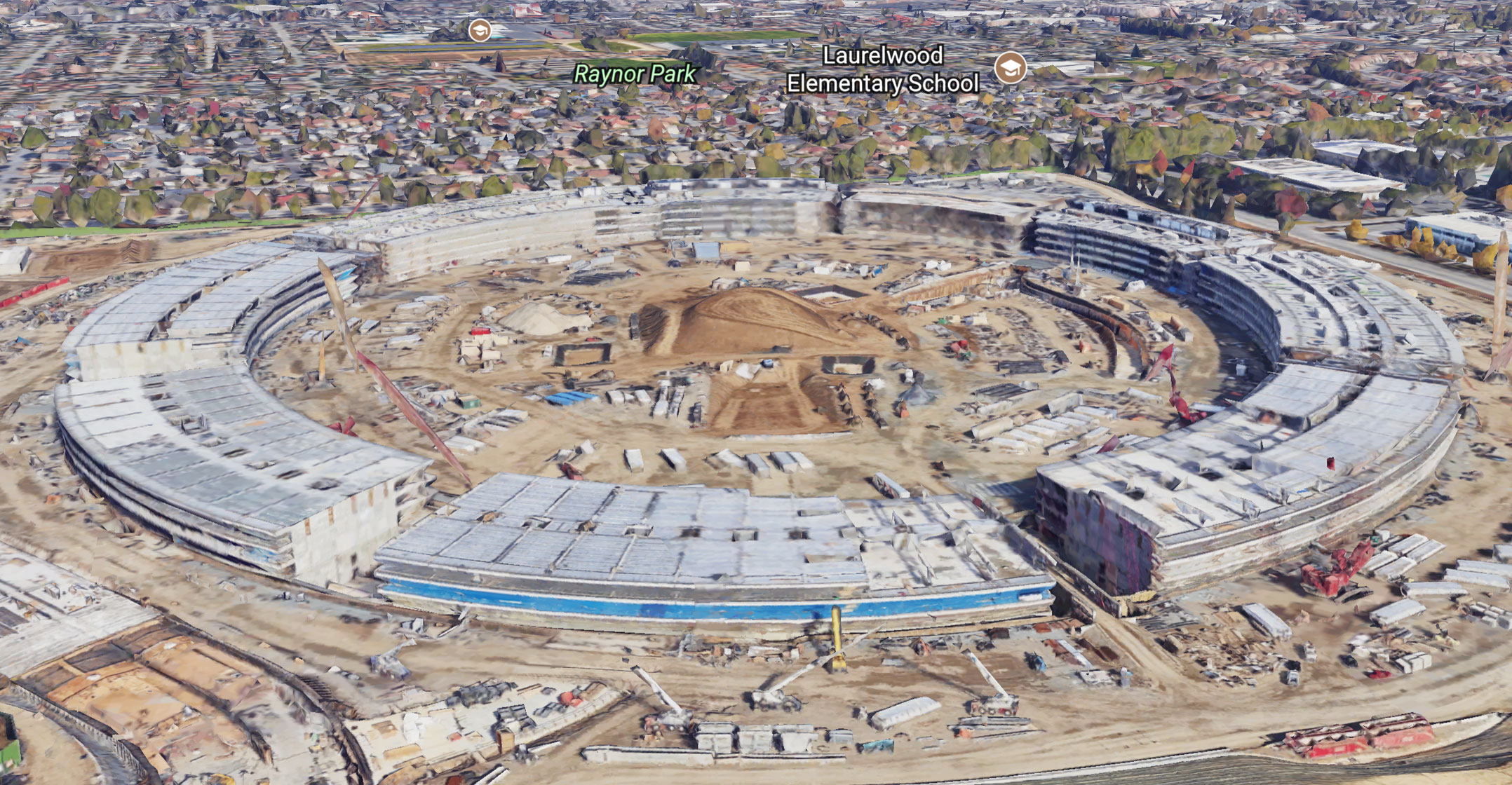
Next Tuesday, Apple will unveil not only its latest batch of products, but also give the hoi polloi a first glimpse of its brand new campus.
The Steve Jobs Theatre will be the day’s focal point. Set apart from Apple’s main, donut-shaped headquarters in what will ultimately be gladed woodland to the southeast, the auditorium will host the press conference.
The entrance to the venue sits underneath a silver disc, whose supporting glass panels make it seem to float six metres above the surrounding clearing. The auditorium itself occupies four underground stories, and to get there, journalists will descend a staircase spiralling down alongside the walls.
It also boasts two custom-made rotating elevators, which turn as they ascend and descend so that passengers enter and exit by the same door even as they go in and out from different directions. So far, so Apple — the more elegant single door, with its complex engineering, preferred to the more obvious double-door solution.
Once CEO Tim Cook and his cohorts finish showing off the new iPhones, Apple Watch and TV onstage, a surprise will await the departing attendees. An inside wall, which obscures a hollow space below the floating saucer, will retract to reveal the product demonstration room, according to someone with knowledge of the design.
Given the theatre’s thousand-person capacity, one engineer said back in March that the building’s budget meant each leather seat had cost Apple the equivalent of US$14 000 (about R180 000) apiece.
Jobs’s final legacy
Apple Park is intended as founder Jobs’s final legacy, and its opening a decade after the first iPhone comes at a juncture when Apple seems to be slowly pivoting toward its next act. The developer kit for augmented reality apps that was released in June may prove to be the foundation stone for a concerted push into AR with smart glasses.
Unlike the way Apple has historically isolated unrelated teams from each other in siloed groups, collaboration is a key buzzword for the new building. Circular buildings typically foster greater secrecy, as with Britain’s Government Communications Headquarters and the Pentagon, because employees enter or leave by the entrance closest to their office, thereby avoiding any unnecessary meet-cute or chitchat.

Even though Apple’s new HQ has nine entrances, the company is adamant that it will instead encourage collaboration, with areas known as pods set aside for people to work or socialise in groups. The single canteen, whose underground kitchen will use elevators to bring food to the cafe level, is planned as a fulcrum for spontaneous meetings and the free exchange of ideas.
Much as it is Jobs’s legacy, the new campus could be a fresh start to move out of his considerable shadow, freed from the nagging question: “What would Steve do?” That his eponymous theatre is set slightly apart from the main building might serve as an apt metaphor.
The site’s reported $5bn budget — equivalent to about eight million iPhones — is eye-watering, and the price of the high-end iPhone will also be a focus on Tuesday. Apple tends to boost the cost of the most expensive model by about $50 every three years. The last time it did so was in 2014, and the most expensive phone right now is $969, so there’s a distinct possibility that the iPhone 8 could top $1 000.
While Apple is making sure that it wrings every possible dollar from each handset, that’s not why it built the new campus. Should Cook succeed in getting teams to work together more closely, the result may be a bevy of products that attracts more customers. Much like the subterranean theatre at the heart of Tuesday’s iPhone unveil, investors are still hoping that deep below the surface, Apple really is toiling away on the next big thing. — Reported by Alex Webb, (c) 2017 Bloomberg LP




